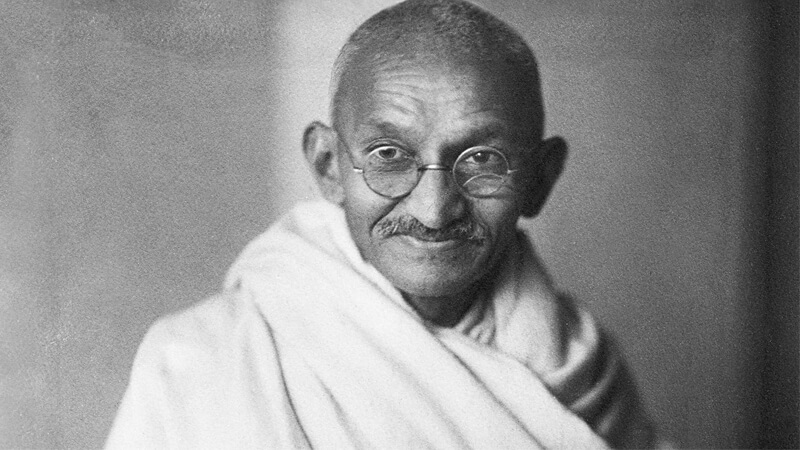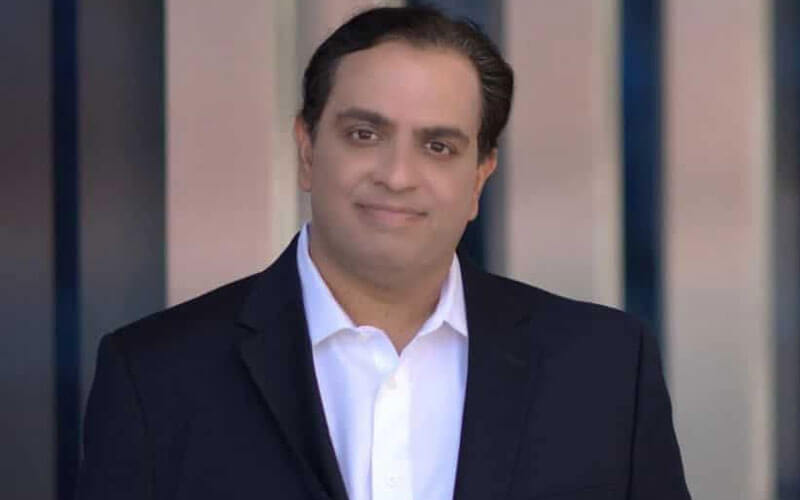Biography of Mahatma Gandhi:- Although he was the architect of Indian independence (1947), Mahatma Gandhi is rarely evoked by that achievement. In the first place, because the most inspiring of his figure lies not so much in that end as in the means, that is to say, in his almost three decades of perseverance in a peaceful activism founded on non-violence and the force of convictions.
And secondly, because their goals were always much broader, and they embraced the abolition of caste, social justice, the transformation of economic structures and harmony between religions, designs that converged on the ideal of a profound ethical and Spiritual of the human being.
Biography of Mahatma Gandhi
- Born:- 2 October 1869, Porbandar, India
- Fullname:- Mohandas Karamchand Gandhi
- Autobiography:- The Story of My Experiments with Truth
- Assassinated:- 30 January 1948, New Delhi, India
Man of inflexible austerity and absolute modesty, who complained of the title of Mahatma (‘Great Soul’) that the poet Rabindranath Tagore had given against his will, Mahatma Gandhi is one of the great figures who, with his thought and his action, Questioned and came to alter the political and ideological establishment of the world in the twentieth century and became a reference for all kinds of mobilizations against injustice.
See Also: Biography of Aga Khan IV
In a country where politics was synonymous with corruption, Gandhi introduced ethics into public life through word and example. He lived in poverty without palliatives, never granted prebends to his relatives and always rejected political power, before and after the liberation of India.
Such idiosyncrasy has made the apostle of non-violence a unique case among the revolutionaries of all times, and the most admired (if not revered) of modern spiritual leaders.
Mohandas Karamchand Gandhi was born on 2 October 1869 in the coastal town of Porbandar, located in the extreme north-west of India, in the Gujarat region. Such a region was then a mosaic of tiny principalities, whose rulers had absolute power over the lives of their subjects.
His father, Karamchand Gandhi, was the prime minister of Porbandar and belonged to the caste of the banias, merchants of proverbial cunning and ability in the commerce. His mother, called Putlibai, came from the sect of the pranamis, who mixed Hinduism with the teachings of the Quran.
Gandhi’s mother was a deeply religious and austere woman who divided her time between the temple and the care of her own, as well as practicing frequent fasts. In the spiritual formation of Mohandas, who felt an unlimited love for his parents, besides the worship of the goddess Vishnu that the family professed, there were a series of cultures and creeds amalgamated: the Hindu, the Muslim and the Jain.
The latter had a special influence on his philosophy: Jains practiced non-violence not only with animals and humans, but also with plants, microbes, water, fire and wind.
A typical example of late genius, Gandhi was a quiet, reclusive, and unashamed teenager in the studios, who passed unnoticed by the Rajkot schools. At the age of thirteen, following the Hindu custom, he was married to a girl of his age called Kasturbai, with whom he had been engaged for six years without knowing it.
The young husband fell passionately in love with the girl, and by making love with her she left the bed of her dying father the very night he died.
The event left a sense of indelible guilt in Gandhi, who would later declare against marriage between children and in favor of sexual continence.
As his grades did not improve at the institute, the family decided to send him to London to attend the Inner Temple Advocacy courses, which were less demanding than those of Indian universities. With so much fear and excitement, young Gandhi embarked in Bombay in September 1888.
He was nineteen years old and had just been a father for the first time. Before leaving he had solemnly promised his mother not to follow the English custom of eating meat, since visnuism forbade it.
Several times in his adolescence he had transgressed such a rule, propelled by a friend who advised the meat to resemble in strength to the English.
In London he lived for three years (1888-1891), a period in which one of the most determining events of his vocation took place: the discovery of the East through the West.
In fact, in the English capital he began to frequent the Theosophists, who initiated him in reading the first Indian classic, the Bhagavad Gita, which he would come to consider “the book par excellence for the knowledge of truth.”
There he also came into contact with the teachings of Christ, and for a time he was so attracted to the Christian ethic that he hesitated between it and Hinduism.
Of that time are his attempts to synthesize the precepts of Buddhism, Christianity, Islam and his native religion through what he pointed out as the unifying principle of all of them: the idea of renunciation.
In these decisive years for his intellectual formation he read Leo Tolstoy, in whom he would later find the guide for perfecting the practice and theory of non-violence.
And when he returned to India with the title of lawyer, he did so with his Eastern signs of identity: he had gone in search of Western wisdom and returned with the secret that had made the Hindus wise.
In South Africa (1893-1915)
Returning to Porbandar he found his family disintegrated: the mother had died shortly before, and the Gandhi had lost all influence in the princely court. As a lawyer he did not find many prospects, since his first professional performance ended in a humiliating failure, because he was silent when addressing the court and could not continue.
It was then that a Muslim trading company offered him a contract to attend a case of the company in the South African city of Durban, and Gandhi did not miss the opportunity: in 1893 he embarked for South Africa.
In the country of the former Dutch settlers lived a Hindu colony formed mostly by workers, whom the English called derisively Sami. They were deprived of all rights and racially discriminated against and discriminated against, as the young lawyer could see in his own flesh during some of his rail journeys.
But the situation was even worse than it seemed. After finishing his work, Gandhi was about to return to India when he learned of the existence of a bill to withdraw the right to vote for Hindus.
He then decided to postpone the game one month organizing the resistance of his compatriots, and the month became twenty-two years.
During this long period of his life, his main concern was the liberation of the Indian community, and in it he was giving shape to the fighting weapons that he would later use in his country.
In the early years, convinced of the good intentions of British colonialism, he opened a law firm to defend his compatriots before the courts in Johannesburg and set out to articulate a movement dedicated to agitation by legal means.
He founded the newspaper “The Indian Opinion” to bring together the Indian community and, as an instrument of legal agitation, created the Indian Christmas Congress.
His Anglophile sympathies led him during the war against the Boers to organize the Indian Ambulance Corps, an action that was severely criticized by Indian nationalists.
In the country of the former Dutch settlers lived a Hindu colony formed mostly by workers, whom the English called derisively Sami. They were deprived of all rights and racially discriminated against and discriminated against, as the young lawyer could see in his own flesh during some of his rail journeys.
But the situation was even worse than it seemed. After finishing his work, Gandhi was about to return to India when he learned of the existence of a bill to withdraw the right to vote for Hindus.
He then decided to postpone the game one month organizing the resistance of his compatriots, and the month became twenty-two years.
During this long period of his life, his main concern was the liberation of the Indian community, and in it he was giving shape to the fighting weapons that he would later use in his country. In the early years, convinced of the good intentions of British colonialism, he opened a law firm to defend his compatriots before the courts in Johannesburg and set out to articulate a movement dedicated to agitation by legal means.
He founded the newspaper “The Indian Opinion” to bring together the Indian community and, as an instrument of legal agitation, created the Indian Christmas Congress.
His Anglophile sympathies led him during the war against the Boers to organize the Indian Ambulance Corps, an action that was severely criticized by Indian nationalists.
Since 1904, the activity of Gandhi underwent a remarkable change: after reading the critique of capitalism contained in Unto This Last, of John Ruskin, changed his lifestyle and went on to live a simple communal existence on the outskirts of Johannesburg, Where he founded a commune called Tolstoy.
At that time he outlined the theory of non-violent activism, which he launched for the first time to oppose the law of registration.
This law obliged all Indians to register in a special register with their fingerprints. Gandhi ordered his compatriots not to register, to trade in the streets without a license, and later to burn their registration cards in front of the mosque in Johannesburg. Like many of his followers, he went to jail several times.
In 1913, the protest against a tax considered unjust was translated into a march through the Transvaal, until Natal. The following year the British authorities reversed this tax and authorized Asians to reside in Natal as free workers.
The victory seemed complete, and Gandhi, who had abandoned his European clothes in protest, departed definitively from South Africa with his wife and children. In the long term, all the achievements of the Indian community were lost, and the Indian authorities hardened their racist policy even further.
But South Africa had been the testbed where Gandhi developed and tested the tactics he would later use in his homeland.
The Apostle of Nonviolence
Preceded by the aura of his successful overseas campaigns, Gandhi arrived in India in 1915 and was received as a true hero. The masses of Bombay received a warm welcome, the English governor came to greet him and the poet Rabindranath Tagore welcomed him at his Free University of Santiniketan.
Shortly after arriving, he founded an almost monastic community in the city of Ahmedabad, where foreign garments, spiced foods and private property were forbidden.
Its members devoted themselves only to two material works: agriculture, to obtain sustenance, and weaving by hand, to procure the shelter. There began a struggle that Gandhi would sustain throughout his life: the battle against Hinduism and the untouchables.
In those early years, Gandhi abandoned all political turmoil in order to support Britain’s war efforts in World War I , including recruiting soldiers for the British army.
His entry into Indian politics did not occur until February 1919, when the passage of the Rowlatt Act, which established censorship and marked harsh penalties for any suspected terrorist or sedition, opened his eyes to the true intentions of the imperialists English in India.
Gandhi then went on to lead the opposition to the law. It organized a propaganda campaign at the national level through non-violence, which began with a general strike.
This soon spread throughout the country and protests followed in the main cities, where there were some outbreaks of violence despite the leader’s insistence on the peaceful character of the demonstrations. When he went to Delhi to appease the population, Gandhi was arrested.
Days later, on April 13, 1919, Brigadier-General Dyer ordered his gurkas to be shot over the crowd gathered at the Jallianwala Bagh in the city of Amritsar. The English domination had shown its true bloodthirsty and brutal face: almost four hundred people were killed and thousands more wounded.
In the years following the massacre of Amritsar, Gandhi became the undisputed nationalist leader, reaching the presidency of the Indian National Congress (also called Congress Party, founded by Alan Octavius Hume in 1885), which Gandhi was able to make an effective instrument In favor of independence: from a grouping of the urban middle classes, it became a mass organization rooted in the towns and in the peasantry.
The great campaigns of civil disobedience began, ranging from the massive refusal to pay taxes until the boycott of the authorities. Thousands of Indians filled the prisons and Gandhi himself was arrested in March 1922. Ten days later he began “The Great Judgment,” in which the Mahatma pleaded guilty and considered the sentence to six years’ imprisonment as an honor,
When he was released from prison (appendicitis made the colonial authorities free him in 1924), he found that the political landscape had changed in his absence: the Congress Party had split into two factions and unity between Hindus and Muslims, achieved with the civil disobedience movement, had disappeared.
Gandhi then decided to withdraw from politics to live as an anchorite, in absolute poverty and seeking silence as a regenerative force. Retired in his Ashram, he became the spiritual head of India in those years, the religious leader of international fame who many Westerners in search of spiritual peace treated like a guru. In those years he wrote an indispensable autobiography, entitled “History of my experiences with truth.
The march of the salt
His retirement ended abruptly in 1927, when the British government appointed a commission charged with the reform of the Constitution in which no native participated. At the head of the political struggle, Gandhi got all parties in the country to boycott the commission.
Shortly thereafter, Bardoli’s strike, in support of the refusal to pay taxes, ended in complete success. The victory of the movement encouraged the Indian National Congress to declare India’s independence on January 26, 1930, and the Mahatma was charged with directing the non-violence campaign to support the resolution.
Gandhi chose the salt monopoly, which particularly affected the poor, from Sabartami on March 12 with seventy-nine volunteers headed for Dandi, a coastal population distant 385 kilometers.
The small movement spread like waves in a pond until it reached all of India. The peasants sowed the paths of the small, semi-naked man with a bamboo cane, on the way to the sea, and at the head of a huge army peaceful.
On the anniversary of the Amritsar massacre, Gandhi reached the shores of the sea and picked up a handful of salt, symbolically breaking the monopoly. From that moment civil disobedience was unstoppable: local deputies and officials resigned, local proletarians abandoned their posts, Indian army soldiers refused to fire on the demonstrators and women joined the movement, while Gandhi’s followers invaded peacefully.
The campaign ended with a pact of compromise between Gandhi and his British Majesty’s viceroy, under which salt production was legalized and around 100,000 prisoners released during the demonstrations were freed. On the other hand, Gandhi was sent to London to participate in the conference that discussed the steps to follow to establish a constitutional government in India (1931).
The presence of the Mahatma in England, apart from the popular reception in the London boroughs, did not lead to favorable developments for the cause, and upon returning to his country he found that Jawaharlal Nehru and other leaders of the Indian National Congress were Once again in prison.
Several times in his life he turned Gandhi to fasts as a means of pressure against power, as a form of spectacular and dramatic struggle to stop the violence or attract the attention of the masses.
The caste system’s lack of humanity, which condemned the outcasts to sheer indigence and ostracism, made Gandhi turn the abolition of untouchability into a fundamental goal of his efforts.
And from Yervada Prison, where he had been confined again, in 1932 he conducted a “fast to the death” against holding separate elections of Hindus and outcasts. This forced all political leaders to go to their prison bed to sign a pact with English consent.
The work of “popular pedagogy” to cure Hindu society of its sores did not end here. Distanced since 1934 by the Congress Party because of the disappointment caused by the maneuvers of the politicians, he went to visit distant villages, insisting on popular education, on the prohibition of alcohol, on the spiritual liberation of man.
The Independence of India
The outbreak of World War II (1939-1945) was the reason that Gandhi, once again, returned to the forefront of politics. His opposition to the war was absolute and did not share the opinion of Jawaharlal Nehru and other leaders of Congress, who were inclined to support the struggle against fascism.
But the viceroy’s decision to incorporate the subcontinent into Britain’s war preparations without consulting local politicians clarified the waters, prompting the mass resignation of ministers from the National Indian Congress.
After the capture of Rangoon by the Japanese, Gandhi demanded the complete independence of India, so that the country could freely make its decisions.
The next day, on August 9, 1942, he was arrested along with other members of the Congress Party, resulting in a mass uprising of the natives, followed by a series of violent riots throughout the Indian Territory.
This was the last prison of the Mahatma and perhaps the most painful, because from his prison in Poona he learned of the death of his wife, Kasturbai. He was already a frail and frail old man when he was released in 1944.
After the war, and after the rise to power of Labor in England, Gandhi played a key role in the negotiations that led to the liberation.
However, his stance opposed to the partition of the subcontinent could not defeat the determination of the leader of the Muslim League, Mohammed Ali Jinnah, and defender of the separation of Pakistan.
In 1946 the Mahatma saw with horror how the ancient Indian ghosts resurfaced during the celebration of the appointment of Jawaharlal Nehru as the first head of government, which was the pretext of violent riots motivated by the struggle between Hindus and Muslims.
Gandhi moved to Noakhali, where the fighting had begun, and walked from village to village, barefoot, trying to stop the massacres that accompanied the partition in Bengal, Calcutta, Bihar, Kashmir and Delhi.
But his efforts only increased the hatred of the extremist fanatics of both peoples: the Hindus attacked his life in Calcutta and the Muslims did the same in Noakhali.
During his last days in Delhi he carried out a fast to reconcile the two communities, which severely affected his health. Even so, he appeared again in public a few days before his death.
On January 30, 1948, when at dusk he went to the community prayer, he was hit by the bullets of a young Hindu. Just as he had predicted to his granddaughter, he died as a true Mahatma, with the word Rama (‘God’) on his lips.
As Einstein put it, “perhaps generations to come will ever doubt that such a man is a reality of flesh and blood in this world.”




